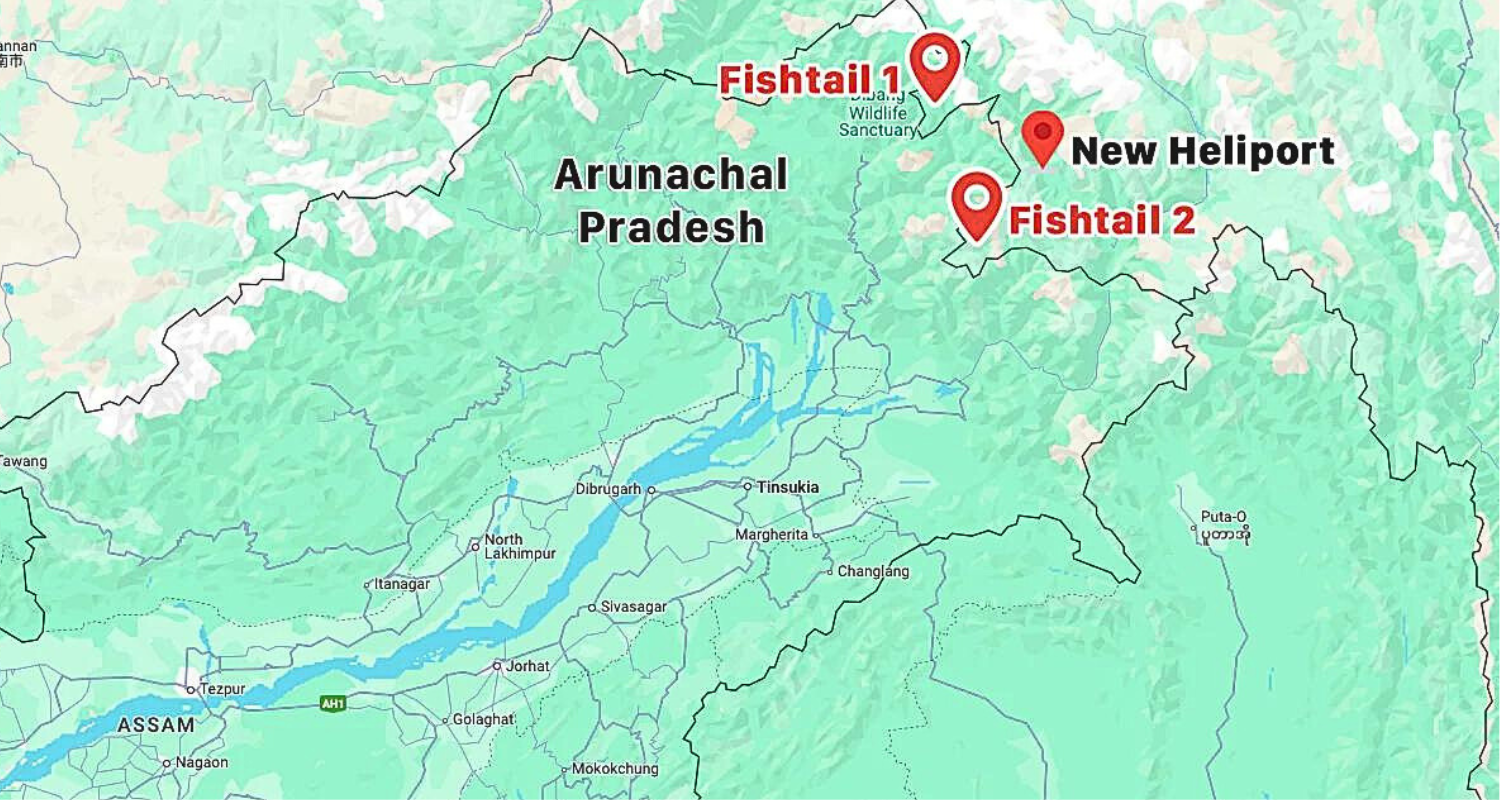Recent satellite images have revealed China’s increased military presence near Arunachal Pradesh with the construction of a significant heliport just 20 kilometres east of the Line of Actual Control (LAC).
The new facility has become a focal point of concern amid ongoing border tensions with India.
The heliport, situated near Arunachal Pradesh’s ‘Fishtails’ sector on the banks of the Gongrigabu Qu river in Tibet’s Nyingchi Prefecture, was initially reported as a non-existent site until December 2023.
Recent visuals from September 16 indicate that the construction is well underway, with a 600-metre runway and multiple hangars designed to enhance China's air mobility in the region.
External Affairs Minister S. Jaishankar revealed last week that 75 per cent of disengagement issues with China had been resolved in the ongoing border talks.
Speaking during a conversation with Ambassador Jean-David Levitte at the Geneva Centre for Security Policy, Jaishankar said, "We did not have an easy relationship in the past. What happened in 2020 was in violation of multiple agreements; the Chinese moved a large number of troops to the Line of Actual Control. We, in response, moved our troops up… Some progress on border talks with China. Around 75 per cent of disengagement problems are sorted out. We still have some things to do."
Strategic implications of the new heliport
The construction of this heliport is significant for several reasons. According to geospatial analyst Damien Symon, “the heliport will allow the People’s Liberation Army (PLA) to intensify intelligence-gathering, surveillance, and reconnaissance activities.”
He further noted that “this facility will likely enhance China’s ability to swiftly mobilise troops to forward positions and would improve its border patrols.”
Military experts view the heliport as a strategic asset that could potentially strengthen China’s ability to escalate its presence along the LAC.
Lt General Pravin Bakshi (retired), former head of the Eastern Command of the Indian Army, has expressed concern, stating, “This heliport will be a threat to key areas which are considered ‘sensitive’ here.
I would take serious note and look to orchestrate a suitable response, if ever required, in concern with the Indian Air Force so as to prevent any ‘grey-zone’ warfare being efficiently prosecuted by the Chinese here.”

China's growing military footprint
The heliport is part of a broader pattern of increased Chinese military infrastructure along the LAC. Since the 2020 Galwan clash, China has been expanding its presence with new constructions, including villages, bridges, and military camps.
Notably, a 400-metre bridge connecting the north and south banks of Pangong Lake was completed earlier this year, further enhancing China's strategic capabilities.
Reports from a UK think-tank also highlight China’s infrastructural expansion at Aksai Chin, where roads, outposts, and modern camps with amenities like solar panels and helipads have been constructed.
Additionally, the PLA has been augmenting its capabilities with new tunnels, helipads, and additional aircraft deployments.
India's response to the new developments
In response to China’s escalating activities, India has been fortifying its own border infrastructure. Although there has been no official reaction to the new heliport from the Indian government, steps are being taken to bolster India’s presence and preparedness.
The Indian government has initiated the ‘Vibrant Villages’ project, aimed at developing 3,000 villages in Northeastern border states, including Arunachal Pradesh.
This project, with an initial budget of ₹4,800 crore, seeks to enhance connectivity and support for border areas.
In response to China's recent renaming of locations in Arunachal Pradesh in March, the Indian government initiated a similar move to rename around 30 places in China's Tibet Autonomous Region.
Furthermore, the construction of a 2,400-kilometre trans-Arunachal highway is underway, designed to improve travel times to frontline Army posts.
In August, India approved the construction of five additional roads along the LAC in eastern Ladakh.
The Indian military is also building high-tech bunkers along the border, capable of housing at least 120 troops each, ensuring their operational readiness in extreme conditions.
The broader context
The timing of China’s heliport construction coincides with its efforts to expand ‘Xiaokang’ villages along the LAC.
These villages, which combine civilian and military functions, have been viewed as a tactic to assert territorial claims and alter the status quo along the border, a strategy often referred to as “salami slicing” by defence experts.
The late Chief of Defence Staff Bipin Rawat had described these villages as part of China’s broader strategy to cement its territorial claims and exert pressure on India.


